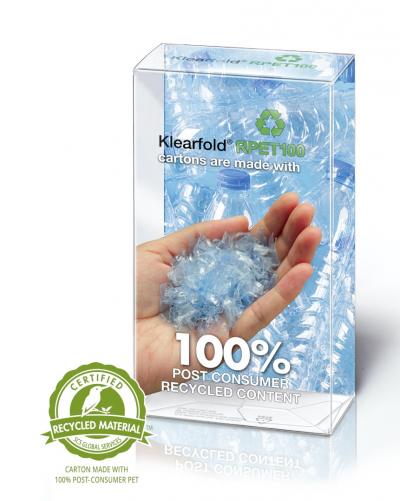100% Post Consumer Waste and “Good” Plastic

Consumers are becoming increasingly environmentally conscious when looking at product packaging, and in particular, the use of plastic packaging. With pollution becoming an increasing threat to the environment and the raw materials used to make plastics becoming scarcer and more expensive, HLP Klearfold have been committed to minimising their environmental impact in plastic production.
After years of researching methods to increase the use of recycled materials in plastic products, HLP Klearfold are now able to offer 100% post consumer waste plastic packaging.
What is 100% Post Consumer Waste?
Post consumer waste is the material left over or discarded from a product once it has been used. For example, an empty plastic water bottle or a newspaper that someone has finished reading.
But what if this waste could be made into something new? Creating products from post consumer waste could save businesses time and money, all while benefiting the environment. At HLP Klearfold we are doing exactly that with post consumer waste plastics.
Post Consumer Waste and Sustainability
Using 100% post consumer waste to create new plastic products can save businesses valuable money and resources, while also alleviating the environmental burden of producing plastics. Recycling plastics in this way has a range of environmental benefits, including:
- Diverting plastics from landfill
Despite the fact that all PET plastics, including our own, are 100% recyclable, many still end up in landfill sites. By producing plastic from 100% recycled consumer waste we are able to ‘close the loop’, diverting plastics from landfills and extending their use.
- Reducing use of fossil fuels
Plastics are typically manufactured from fossil fuels, an expensive, environmentally damaging and increasingly scarce resource. Extending the life of existing plastics can help to reduce this pressure on fossil fuels, and the overall environmental impact of plastic production.
- Lower carbon footprint
Manufacturing PET plastics from 100% post consumer waste has a carbon footprint 60% lower than that produced when manufacturing PET from scratch. Using post consumer waste reduces the amount of resources needed to develop plastic products, creating a more sustainable manufacturing process.
- Tackle the issue of microplastics
Microplastics can be created from other waste plastics breaking down into small fragments. These microplastics are a huge environmental problem for our oceans and marine life. Reusing plastic products before they are discarded and pose a potential threat, can in time help to reduce the prevalence of microplastics in our oceans, improving water quality and marine health.
HLP Klearfold’s 100% Post Consumer Waste Plastic Packaging Solutions
At HLP Klearfold, we recognise the environmental issues plastics pose, and we have been continuously aiming to increase our use of recycled materials in our manufacturing process for years. Our RPET packaging can be made from up to 100% recycled consumer waste and is 100% recyclable.
Now we have been able to create a plastic made from 100% post consumer waste, making it an entirely sustainable plastic that is durable and suited to a range of packaging requirements.
100% post consumer waste is the future of plastic packaging. Environmental sustainability is important to us and increasingly, to consumers globally. Pursue your business’ sustainability goals and environmental ethos by switching to our 100% recycled plastic packaging for your products.
All PET is 100% recyclable, ours contains 30% process waste. We can offer PCW at 50% content equivalent to 20% virgin, 30% process, 50% PCW or if instructed / requested 100% PCW. HLP Klearfold is committed to supporting and encouraging people to recycle. We want all to join us in the zero waste revolution. Encouraging people to recycle enables us to obtain PCW more easily and therefore use less virgin polymer. Contact us today to discuss your packaging needs and discover how your business could use our 100% post consumer waste plastic packaging.





